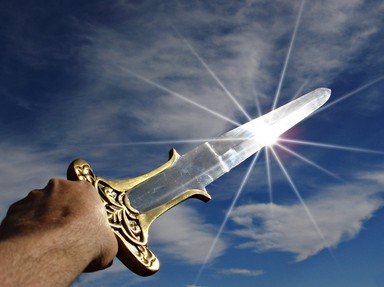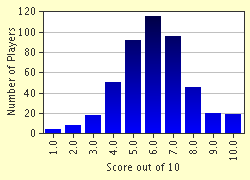Quiz Answer Key and Fun Facts
1. The Battle of El Alamein (October-November 1942) was fought between the Allied Eighth Army, comprising British, Canadian and Australian troops under General Bernard Montgomery, and the German Afrika Korps. Who commanded the Afrika-Korps?
2. This battle was fought in 490 BC between the Greeks under Miltiades and the Persians under Darius, and is commemorated in the Olympics, and elsewhere. What is its name?
3. The Battle of Britain lasted from July to late October 1940, when Herman Goering's Luftwaffe attempted to gain air superiority by destroying Royal Air Force aircraft, airfields and radar installations in preparation for the invasion of Britain. Which legendary aircraft scored more kills in the Battle of Britain than any other?
4. In 1805, a British Royal Navy battle fleet under Admiral Lord Horatio Nelson engaged and defeated a combined French and Spanish fleet. It was a turning point in Napoleon's apparently unstoppable career. Where did this battle take place?
5. On 7th December 1941, a Japanese carrier-based force attacked the US Pacific Fleet at its base in Pearl Harbor, Hawaii, causing massive losses in ships and personnel. Who commanded the Japanese fleet which attacked Pearl Harbor?
6. Fought in the North Sea off the coast of Denmark in 1916, this is seen as the last great battle between battleships. What was its name?
7. This battle in August 1918 is one of the lesser-known battles of WWI; although there was fierce fighting and heavy losses on both sides, the death toll was much lower than the Somme, Vimy Ridge, or Verdun, for example. Yet this battle signalled the end for Germany, and may have shortened the war by many months - German morale crumbled and the German Commander-in-Chief, General Erich Ludendorff, declared it to be the "Black Day of the War" for Germany. Where was it?
8. During the American War of Independence, in 1777, a British army under General Sir John Burgoyne was comprehensively defeated at the Battle of Saratoga. During the battle the Patriot commander was relieved of his command, and he ultimately switched his allegiance to the British side. What was his name?
9. This battle was, arguably, the most bloody battle in history, and a major turning point in WWII. Two utterly ruthless opponents battled over a Russian city over a period of 5 months in the winter of 1942 and '43, neither much caring about the consequences for the civilian population. What was the city?
10. In 1588, a Spanish fleet sailed with the objective of invading England. It was intercepted by an English fleet and defeated in the English Channel. Who was the admiral in command of the English Fleet?
Source: Author
frankmcvey
This quiz was reviewed by FunTrivia editor
bloomsby before going online.
Any errors found in FunTrivia content are routinely corrected through our feedback system.

